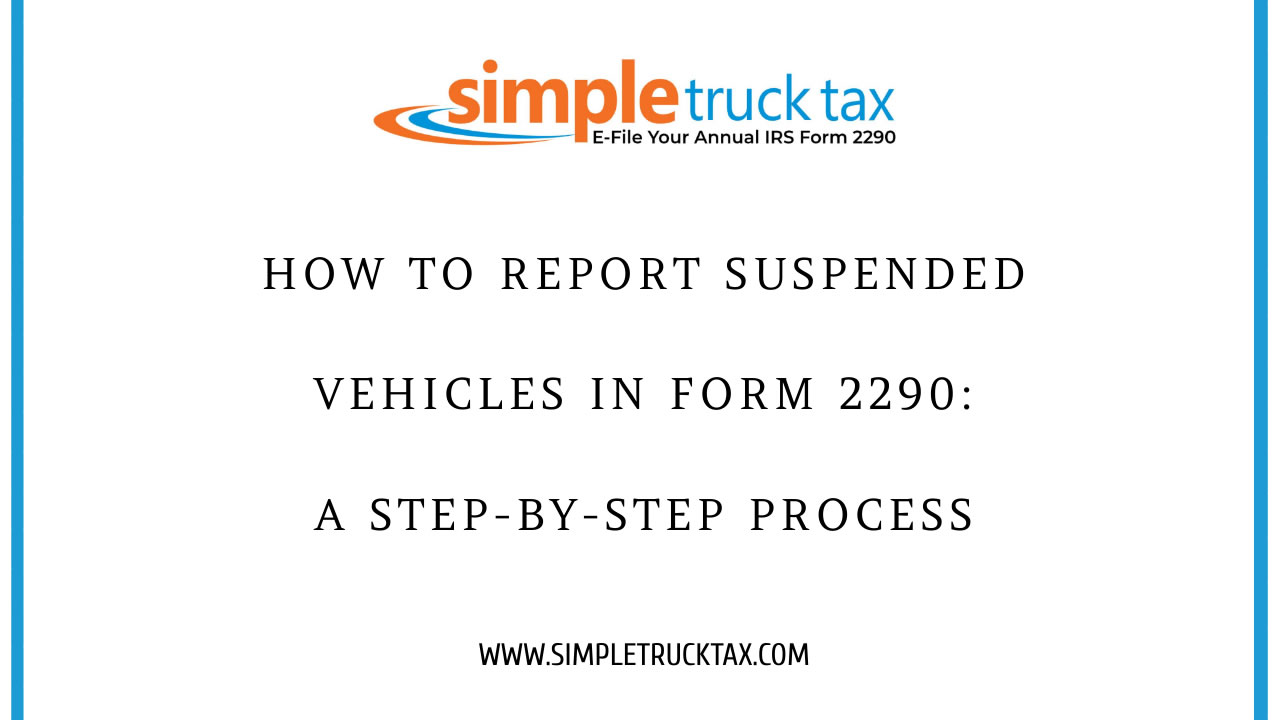
How to Report Suspended Vehicles in Form 2290: A Step-by-Step Process
As a truck owner or operator, it is important to stay informed about the rules and regulations surrounding suspended vehicles, especially when it comes to filing your IRS Form 2290. We will walk you through the step-by-step process of reporting suspended vehicles in Form 2290.
What is a Suspended Vehicle?
Before we dive into the reporting process, let's first understand what constitutes a suspended vehicle. A suspended vehicle is one that is exempt from paying the Heavy Vehicle Use Tax (HVUT) for the tax period due to limited mileage or other reasons. The IRS allows truck owners to suspend the tax on vehicles that are expected to travel fewer than 5,000 miles (7,500 miles for agricultural vehicles) during the tax period.
Step 1: Gather Necessary Information
The first step in reporting a suspended vehicle in Form 2290 is to gather all the necessary information about the vehicle. This includes the VIN (Vehicle Identification Number), make and model of the truck, and the reason for suspension (e.g., limited mileage).
Step 2: Fill Out Form 2290
Once you have all the necessary information, you can proceed to fill out Form 2290. On the form, you will need to provide details about your truck, including the VIN, taxable gross weight, and the first month of use. In the section for suspended vehicles, you will need to indicate the reason for suspension and provide an estimate of the mileage for the tax period.
Step 3: Submit Form 2290
After completing the form, you can submit it to the IRS along with any required payment. If you are reporting a suspended vehicle, you will not need to pay the HVUT for that vehicle for the tax period. However, it is important to keep accurate records of the mileage for each suspended vehicle to avoid any discrepancies during an audit.
Step 4: Keep Records
Lastly, it is crucial to keep detailed records of all your suspended vehicles and their mileage throughout the tax period. This will help you stay compliant with IRS regulations and provide evidence in case of an audit.
Reporting suspended vehicles in Form 2290 is a simple process that requires careful attention to detail. By following these steps and staying informed about the rules and regulations surrounding HVUT, you can ensure that your trucking operations are in compliance with IRS requirements.
Note: For more information, visit IRS website